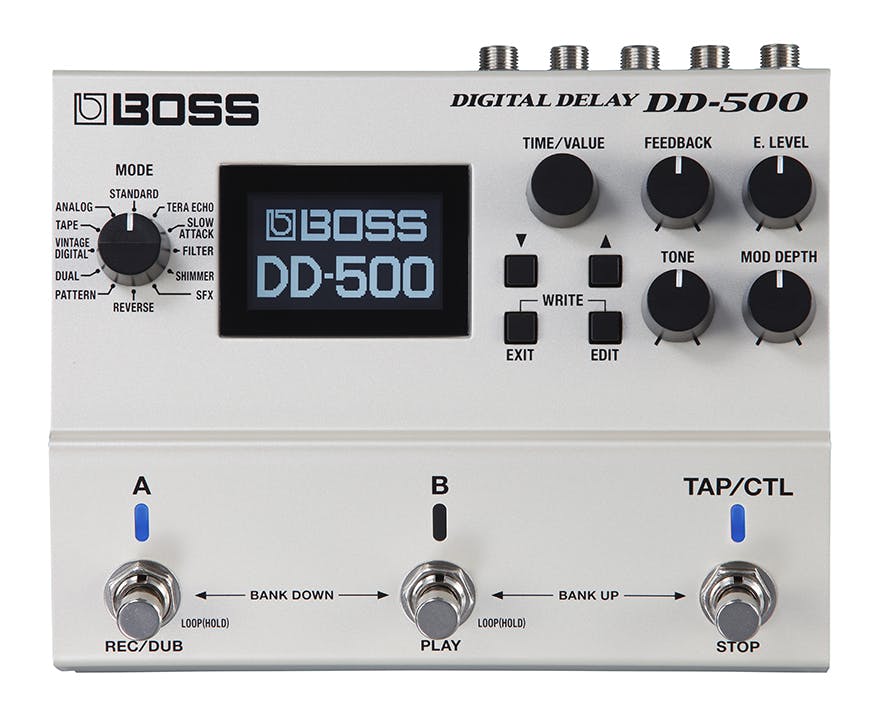Description
The Mooer Reecho Digital Delay Pedal is currently retailing at £59 and it is in stock. Available to be delivered to you by post direct (some charge may apply).The team at Just Pedals think that Mooer nailed it with the Mooer Reecho Digital Delay Pedal.
The Mooer Reecho is the most flexible delay guitar pedal in the Mooer range offer delay times from 5ms right through to 780ms with control over effect level and feedback as well as three way switch to define the tone of the delays: Analog, Real and Tape. A fantastic addition to any pedalboard!
Please note the all Mooer micro series pedals must be powered by 9V DC (not supplied) as they are too small for battery compartments!
Specification
- 3 Delay Modes: Analog/Real Echo/Tape Echo
- Analog: Simulates a warm and smooth echo sound created by classic analog delay equipment.
- Real Echo: Simulates a natural echo sound in real environment.
- Tape Echo: Simulates the sweet and spacy echo sound from analog delay equipment.
- vintage tape echo machine.
- Full metal shell
- Very small and exquisite
- True bypass
- Delay Modes: 3(Analog, Real Echo, Tape Echo)
- Delay Time: 5ms~780ms
- Input: 1/4” monaural jack (impedance: 470k Ohms)
- Output: 1/4” monaural jack (impedance: 100 Ohms)
- Power Requirements: AC adapter 9V DC (center minus plug)
- Current Draw: 128 mA
- Dimensions: 93.5mm (D) × 42mm (W) × 52mm (H)
- Weight:160g
So What kind of Power Supply do I need???As we've said above, the Mooer pedals are too small to fit a 9v battery in, so you need to use these with a compatible 9v power supply. You may already have one for an old pedal, but if you need to buy a new one, you can choose anything from a single 9v supply for about £10, or if you plan on buying a few pedals, then you should look at some of the multi pedal power supplies that we sell – these will work out much cheaper than buying an individual supply for each pedal as well as being much neater as you'll only need one plug socket for all your pedals!






























